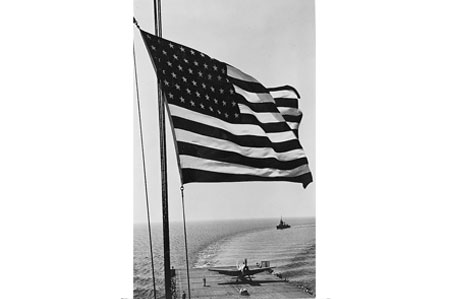
The United States currently operates two classes of aircraft carriers: the Nimitz
class, the world’s second-largest aircraft carrier, and the Gerald R. Ford class,
the largest in the world.
The first carrier in the Nimitz class, USS Nimitz (CVN 68), deployed in May 1975
and the tenth and last ship, USS George H. W. Bush (CVN 77), was commissioned in January
2009. Nimitz-class carriers have a full load displacement of 97,000 tons, are
capable of carrying more than 60 aircraft, can accommodate about 5,000 personnel,
and are powered by two nuclear reactors. Each is designed to operate for 50
years, with just one mid-life overhaul.
USS Gerald R. Ford (CVN 78), the first of its class, was christened in November
2013, delivered to the Navy in May 2017, and is expected to achieve operational capability
in 2020. The second ship of this class is currently under construction.
Gerald R. Ford-class carriers have a full load displacement of 100,000 tons, are capable
of carrying more than 75 aircraft, can accommodate 4,539 personnel, and are powered
by two nuclear reactors.
The Gerald R. Ford class will be the premier forward asset for crisis response
and early decisive striking power in combat operations. These aircraft carriers
bring improved warfighting capability, quality of life improvement for sailors, and
reduced total ownership costs. Each ship will save almost $4 billion during
its 50-year service life compared to the Nimitz class.

